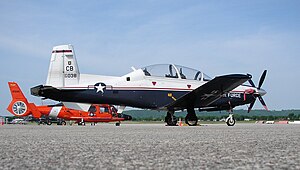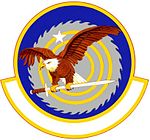
The 13th Bomb Squadron is a squadron of the United States Air Force. It is assigned to the 509th Operations Group, Air Force Global Strike Command, stationed at Whiteman Air Force Base, Missouri. The squadron is equipped with the Northrop Grumman B-2 Spirit Stealth Bomber.
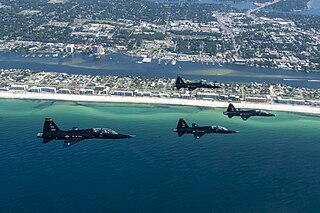
The 2nd Fighter Training Squadron, sometimes written as 2d Fighter Training Squadron, is an active United States Air Force unit, assigned to the 325th Operations Group at Tyndall Air Force Base, Florida.

The 8th Fighter Squadron is an active United States Air Force squadron, assigned to the 54th Fighter Group Air Education and Training Command, stationed at Holloman Air Force Base, New Mexico. It currently operates the General Dynamics F-16 Fighting Falcon aircraft, conducting initial training, transition and instructor upgrades training. The squadron have a proud lineage of aircraft and assignments. The origin of the 8th Fighter Squadron can be traced back to 1940, and since then, the squadron has served in several war and peace time assignments across the globe.

The 9th Attack Squadron is a United States Air Force squadron, assigned to the 49th Operations Group, stationed at Holloman Air Force Base, New Mexico. The squadron is a training unit for new pilots and sensor operators for the MQ-9 Reaper Remotely Piloted Aircraft (RPA).

The 35th Fighter Squadron is a United States Air Force unit, assigned to the 8th Operations Group, stationed at Kunsan Air Base, South Korea. The squadron operates the General Dynamics F-16 Fighting Falcon aircraft conducting air superiority missions.

The 58th Fighter Squadron is part of the 33d Fighter Wing, a joint graduate flying and maintenance training wing for the F-35A, B, and C, organized under Air Education and Training Command's 19th Air Force, at Eglin Air Force Base, Florida. Its mission is to train US Air Force operators and maintainers on employment and maintenance of the F-35A Lightning II, as part of the overall 33d FW mission of training American and international aircrews and maintainers of US Air Force, US Navy, US Marine Corps, and international Air Forces.

The 68th Fighter Squadron was one of the longest-serving fighter squadrons in U.S. Air Force history, remaining active almost continually for 60 years. Known as the "Lightning Lancers", on the morning of 27 June 1950 pilots of the 68th Fighter-All Weather Squadron flying the North American F-82 Twin Mustang made history by achieving the first aerial kill of the Korean War.

The 310th Fighter Squadron is part of the 56th Operations Group at Luke Air Force Base, Arizona. It operates the Lockheed Martin F-35A Lightning II, conducting advanced fighter training.

The 108th Operations Group is a unit of the 108th Wing of the New Jersey Air National Guard, one of the many units stationed at the McGuire AFB entity of Joint Base McGuire-Dix-Lakehurst, New Jersey. If activated to federal service with the U.S. Air Force, the group is gained by Air Mobility Command.

The 39th Flying Training Squadron is part of the 340th Flying Training Group and is the reserve associate to the 12th Flying Training Wing based at Randolph Air Force Base, Texas.

The 431st Test and Evaluation Squadron is an inactive United States Air Force unit. Its last assignment was with the Tactical Air Command 57th Fighter Wing stationed at Nellis Air Force Base, Nevada. It was inactivated on 30 June 1992.

The 63d Bombardment Squadron is an inactive United States Air Force unit that was last assigned to the 43rd Bombardment Wing at Little Rock Air Force Base, Arkansas, where it was inactivated on 31 January 1970.

The 65th Special Operations Squadron is an Air Force Special Operations Command unit which flies the General Atomics MQ-9 Reaper at Hurlburt Field, Florida. The squadron was first activated as the 65th Bombardment Squadron in January 1941, one of the original squadrons of the 43rd Bombardment Group. Following the attack on Pearl Harbor, the squadron participated in antisubmarine patrols until January 1942, when it moved to Australia and the Southwest Pacific Theater. It moved forward with US forces through New Guinea and the Philippines, moving to Ie Shima shortly before V-J Day for operations against Japan. It earned two Distinguished Unit Citations and a Philippine Presidential Unit Citation for combat operations. During this period, a crew from the 65th became the most decorated aircrew in United States history, when their B-17 fought off twenty Japanese fighters during a photo reconnaissance mission. The squadron was inactivated in the Philippines in April 1946.

The V Fighter Command is a disbanded United States Air Force headquarters. It was established as the 2nd Interceptor Command in June 1941, with responsibility for air defense of the northwest United States and training fighter units in its area of responsibility. Shortly after the attack on Pearl Harbor, the Army formed Western Defense Command, with responsibility for the entire Pacific coast. All air defense functions were transferred to 4th Interceptor Command, and the command was slated for transfer to the Southwest Pacific Theater as 5th Fighter Command.

The 71st Operations Group is the operational flying component of the United States Air Force 71st Flying Training Wing. It is stationed at Vance Air Force Base, Oklahoma.

The 33d Operations Group is the flying component of the 33d Fighter Wing, assigned to Air Education and Training Command of the United States Air Force. The group is stationed at Eglin Air Force Base, Florida.

The 57th Operations Group is the operational component of the 57th Wing, assigned to the United States Air Force's Air Combat Command. The group is stationed at Nellis Air Force Base, Nevada.
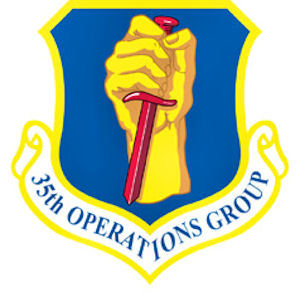
The 35th Operations Group is the operational flying component of the United States Air Force 35th Fighter Wing. It is stationed at Misawa Air Base, Japan, and is a part of Pacific Air Forces (PACAF).
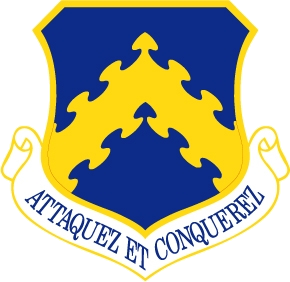
The 8th Operations Group is the operational flying component of the United States Air Force 8th Fighter Wing. It is stationed at Kunsan Air Base, South Korea, and is a part of Pacific Air Forces (PACAF).

The United States Air Force's 66th Weapons Squadron is a United States Air Force Weapons School Fairchild Republic A-10 Thunderbolt II instructional flying unit, at Nellis Air Force Base, Nevada.
